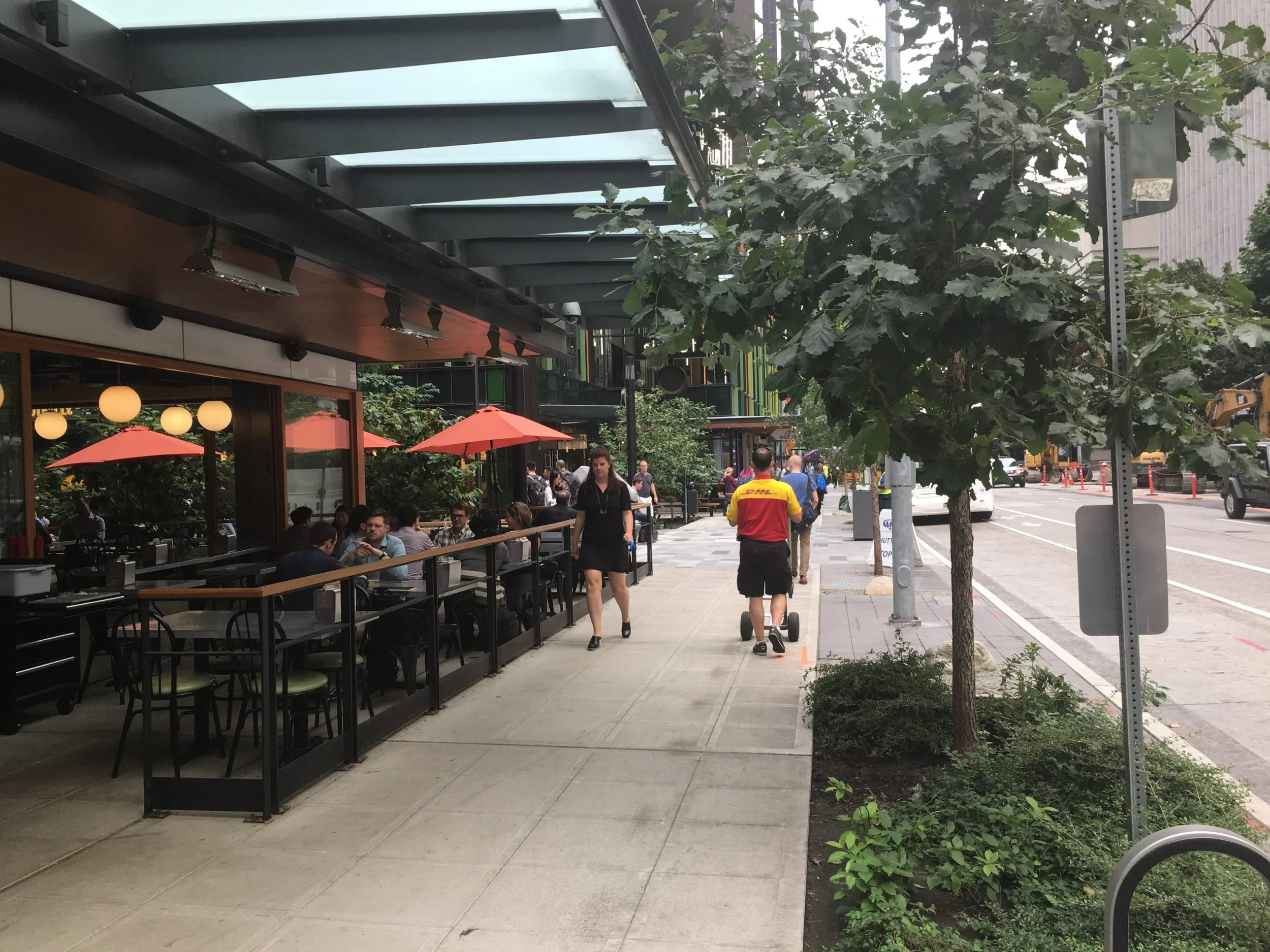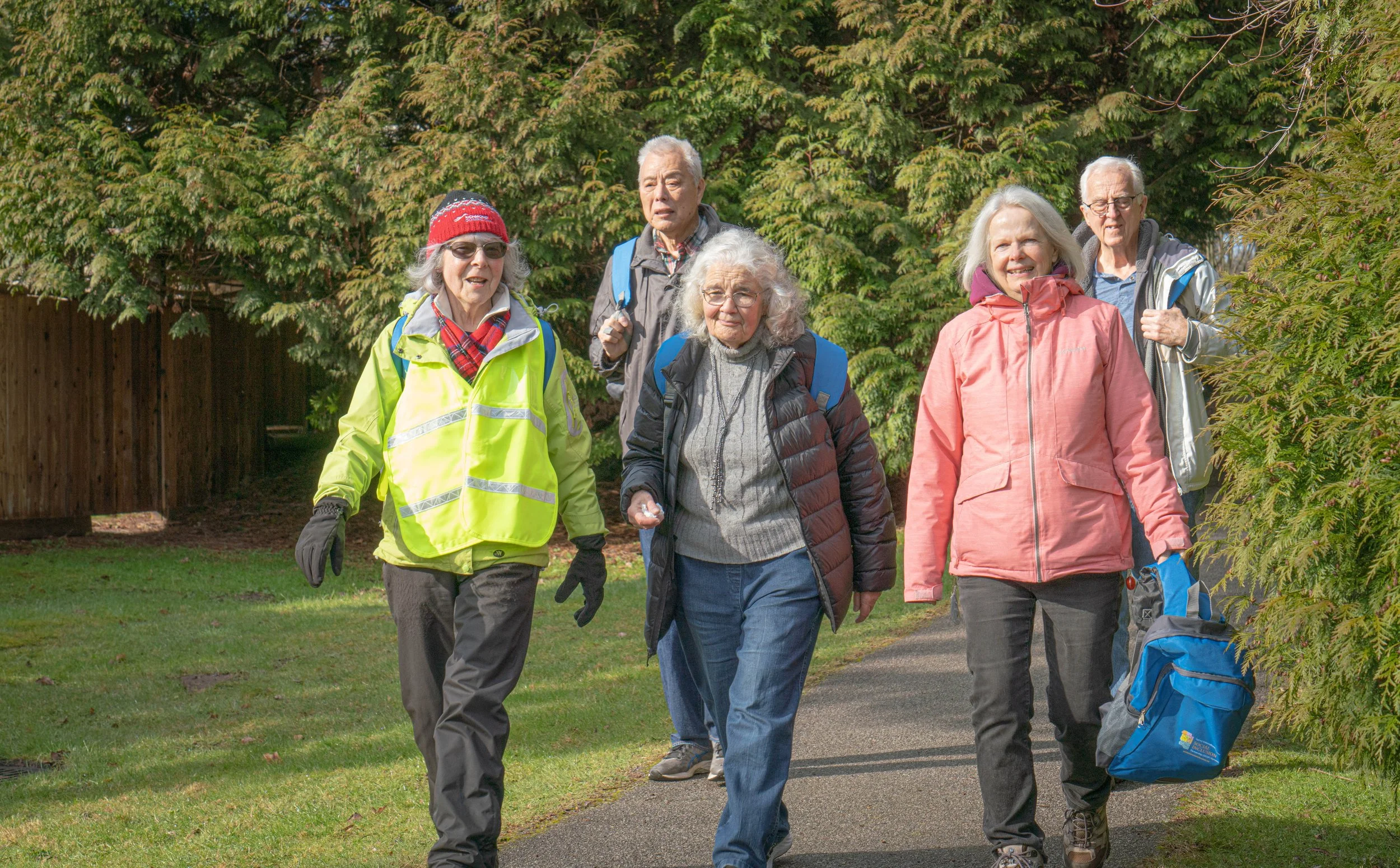New guidelines for age-and dementia-inclusive neighbourhoods
Learn the unique planning and design considerations for older adults and people living with dementia through a free online course.
Conceptual illustration for a dementia-inclusive neighbourhood space. (Happy Cities)
Globally, over 833 million people worldwide are over the age of 65, and at least 55 million live with dementia. In Canada, around one million will be living with dementia by 2030.
People living with dementia often experience stigma and misunderstanding—from strangers and close family alike—particularly around their ability to maintain independence and navigate the public realm.
“People often hear the word ‘Alzheimer’ and think of negative things,” said one participant in the DemSCAPE project (short for Dementia-inclusive Streets and Community Access, Participation, and Engagement). “They don’t see there’s life after the diagnosis. You can still exist.”
A unique collaboration between Happy Cities and DemSCAPE explores how cities can support social inclusion for people living with dementia—ensuring that this ‘life after the diagnosis’ includes opportunities for meaningful community connection and welcoming spaces to spend time in the neighbourhood. These actions are critical for long-term wellbeing: Research shows that factors including exercise, social connection, and reduced stress can slow the onset or progress of dementia.
Together, Happy Cities and DemSCAPE first launched the Dementia-inclusive Planning and Design Guidelines in 2022. The guidelines drew on extensive background research and engagement with people living with dementia, their care partners, community advocates, and municipal planners.
Planning and design guidelines for age- and dementia-inclusive neighbourhoods
We are excited to share an updated version of the dementia-inclusive planning and design guidelines, this time with a broader focus on age-friendly communities. The aim is to offer a resource for city planners to consider the distinct needs of people living with dementia within aging communities, as very few municipalities have a designated dementia-inclusive action plan. Our resource aims to fill that gap by equipping planners—along with community organizations, advocates, and residents—with the tools and knowledge needed to apply an age and dementia lens to neighbourhood spaces.
Most people diagnosed with dementia are 65 and older. As a result, this update highlights the many overlapping considerations for age- and dementia-inclusive communities. However, the guidelines also identify which considerations are unique for people living with dementia—which are often not captured by broader age-friendly plans.
The guidelines draw on learnings from both the DemSCAPE project and Happy Cities’ prior research, policy, and design work to create more age-friendly, accessible neighbourhoods. Age-friendly environments are not only critical for equitable, inclusive cities, but support better public health outcomes, too. Older adults who are socially isolated are 50 per cent more likely to develop dementia than those who are not. In contrast, people with strong social connections live 15 years longer on average.
Three design scales to understand age-and dementia-inclusive communities. (Happy Cities)
Start your learning journey today!
Explore the age- and dementia-inclusive neighbourhood guidelines in both print PDF format and a series of interactive, online learning modules! The online program covers all information from the guidelines—plus extra interactive diagrams, videos, first-person stories of living with dementia, and optional reflection questions.
The online learning modules are eligible for four professional learning credits from the Planning Institute of British Columbia.
Explore inspiring case studies
The guidelines include inspiring case studies from around the world, showcasing innovative approaches to age- and dementia-inclusive planning and design. Visit the project website to learn more!
Painted icons and clear numbers help people find bus routes at a busy transit interchange in Singapore. Photo: Dementia Singapore
Purple benches along the Aarhus Forget Me Not route, offering a place to rest and sharing stories about dementia. Photos: Aarhus Kommune / Demensvenlig By Aarhus
The Seattle Age-friendly Street Design Toolkit aims to make streets safe and accessible for older adults, including wide walking paths and covered awnings. (Seattle Department of Transportation)
A guided walk organized by the WALKit program in Surrey, Canada, which helps older adults stay active, mobile, and engaged in their community. (City of Surrey)






